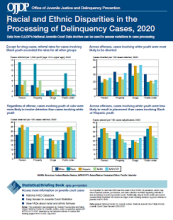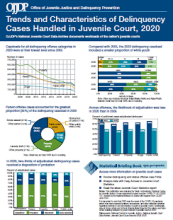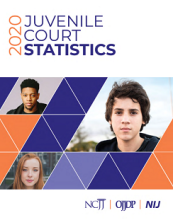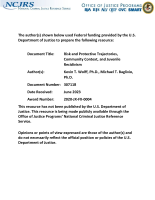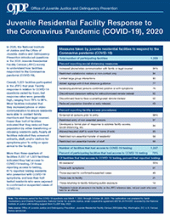Juvenile (under 18)
Positive Adolescent Interpersonal Relationships (PAIR): A Community-Based STRiV Study
Embodying Evidence to Action: Tracking the Impact of Three Key NIJ Research Investments
De-escalation Training: What Works, Implementation Lessons, and Taking It to Scale; Plenary at the 2023 NIJ Research Conference
Police use of force, while infrequently used, is a tremendous concern to public safety in the United States when officers employ it excessively or inappropriately, causing injury or death and eroding public trust in law enforcement. This plenary from the 2023 NIJ Research Conference describes the Integrating, Communications, Assessment, and Tactics (ICAT) de-escalation training program developed by the Police Executive Research Forum to guide officers in defusing critical incidents.
See the YouTube Terms of Service and Google Privacy Policy
Inclusive Research: Engaging People Closest to the Issue Makes for Better Science & Greater Impact; 2023 NIJ Research Conference Plenary
This panel will discuss what inclusive research is, how to conduct it, and what issues and challenges exist about engaging in it. “Inclusive research” has its history as a participatory research method designed to ensure people closest to the issue or problem under study are authentically engaged in the research process rather than simply being “research subjects.” While community-based participatory research has begun to take on greater prominence in the criminal justice realm, such efforts are largely confined to qualitative research inquiries.
See the YouTube Terms of Service and Google Privacy Policy
Adverse Childhood Experiences (ACE), Adolescent Misconduct, and Violent Extremism: A Comparison of Former Left-Wing and Right-Wing Extremists
Racial and Ethnic Disparities in the Processing of Delinquency Cases, 2020
Integrating Large Datasets in Outcome Research: A Case Example
Relations Between Parental Attachment, Empathy, and Bystander Help-Seeking Preference Following Peer Aggression
Adolescent Emotion Regulation and Future Psychopathology: A Prospective Transdiagnostic Analysis
Immigration and School Threat?: Exploring the Significance of the Border
Investigating the impact of age-depended hair colour darkening during childhood on DNA-based hair colour prediction with the HIrisPlex system
The Impact of Parent-Child Closeness and Romantic Attachment on Dating Violence Perpetration in Adolescence
Trends and Characteristics of Delinquency Cases Handled in Juvenile Court, 2020
Perceived sleep quality predicts aggressive offending in adolescence and young adulthood
Predictors of sexual and reproductive health among girls involved in the juvenile legal system: The influence of resources, race, and ethnicity
Juvenile Court Statistics, 2020
Risk and Protective Trajectories, Community Context, and Juvenile Recidivism
NIJ Journal Issue No. 229
The Subadult Virtual Anthropology Database (SVAD): An Accessible Repository of Contemporary Subadult Reference Data
Juvenile Residential Facility Response to the Coronavirus Pandemic (COVID-19), 2020
Quantifying the Impact of Intrinsic and Extrinsic Factors to Improve Juvenile Age Estimation
Driving Down Gun Violence, Part 1
Three LEADS Scholars serving in different law enforcement agencies and positions discuss their experiences with identifying and implementing evidence-based interventions to reduce gun violence. NIJ Senior Advisor Dr. Tamara Herold hosts this conversation with guests Police Chief Cecilia Ashe (Milford Delaware Police Department), Chief of Staff Lieutenant Matthew Barter (Manchester, NH Police Department), and Analytical Services Manager Mr. Jason Schiess (Durham, NC Police Department).



